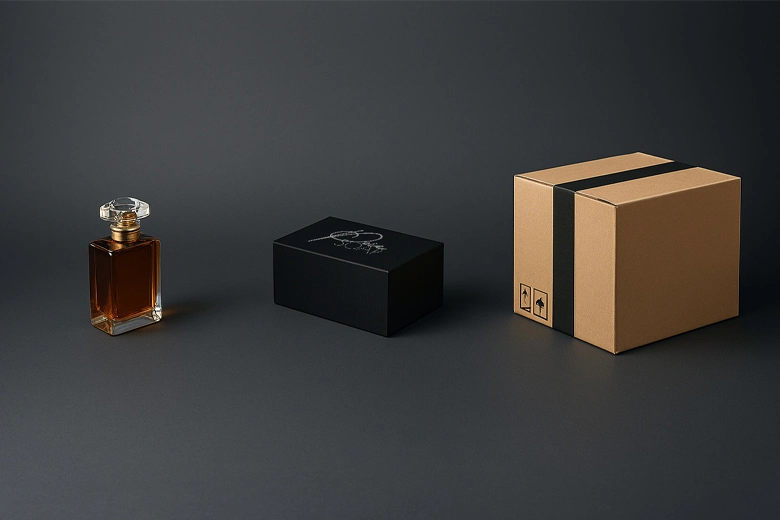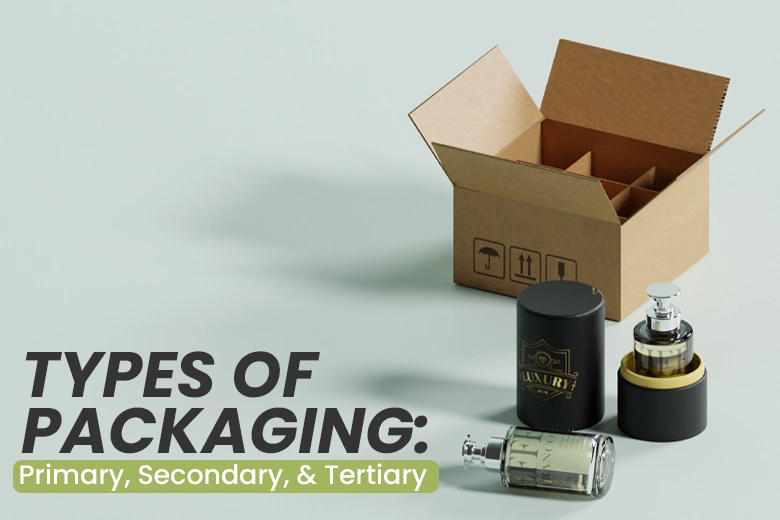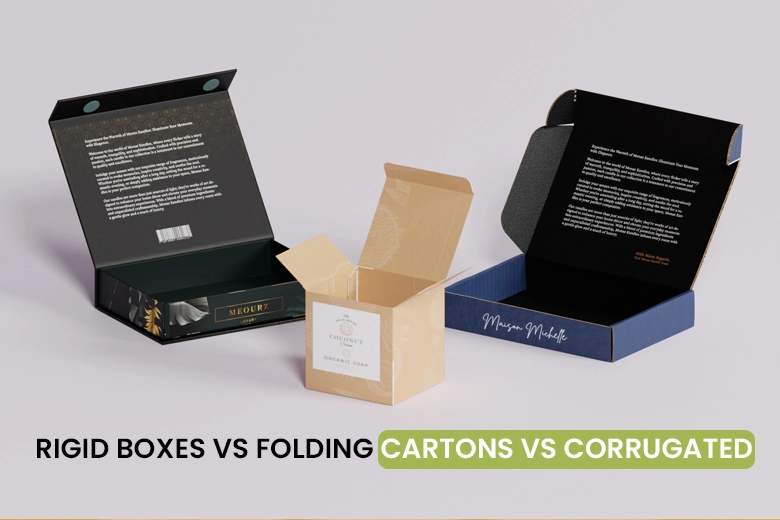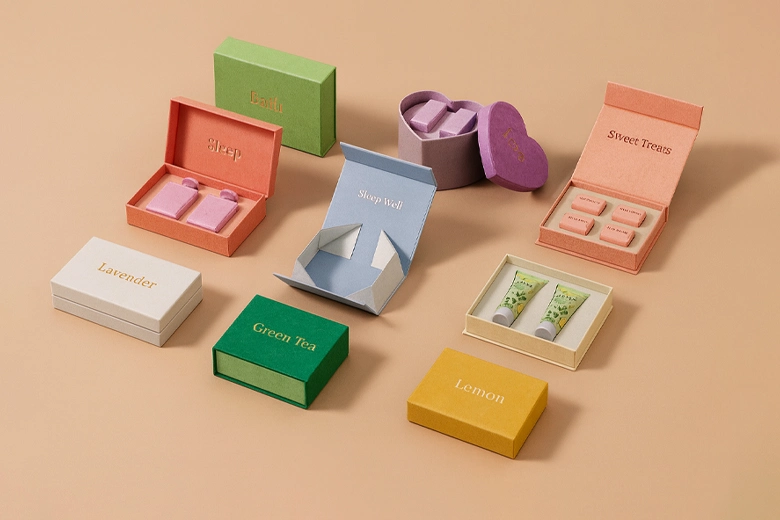Browsing for the right type of product packaging for your business? Packaging is one of the factors that can significantly increase a product’s value and your brand’s image. Product packaging today goes beyond a mere container. With fierce market competition, your packaging can make or break your business. Therefore, you should have the proper knowledge about the right one to use. In this blog, we will explore the types of packaging, including primary, secondary, and tertiary packaging. Let’s get started!
3 Main Types of Product Packaging
If you’re a new startup or just starting a packaging project, you may be confused by the different types of product packaging. Yes, there’s a variety of materials used in packaging, including glass, plastic, cardboard, and wood. However, speaking of the function, there are three main types of packaging in marketing: primary, secondary, and tertiary. Let’s break it down!

Primary Packaging
A question might come to your mind right now: What is primary packaging?
Primary packaging is the type of packaging that comes into direct contact with the product. Its main purpose is to protect and maintain the optimal condition of a product. It is the first material or layer wrapped around a product. Therefore, primary packaging should be eye-catching, as it will be the first image your customer receives when interacting with your product. This is particularly important if you’re running an e-commerce business. On this packaging, you can include labels with important information for customers, such as ingredients or other essential details.
Samples of Primary Packaging
Here are some primary packaging examples used across industries:
- Bottles and Jars: Ideal for liquid items, including beverages, shampoos, oils, and more.
- Boxes: Electronic products, such as smartphones or cameras, typically use boxes as their primary packaging. Some food brands also use boxes as the primary packaging, like cereal boxes and chocolate boxes.
- Wrappers: Every time you buy candy bars or other snack items, you will find them with wrappers. Wrappers act as the ideal primary packaging for candy bars, chips, and other snack items.
- Blister packs: Medicines or toys are often packed in a blister pack made of plastic material that helps to keep the products safe. However, some pharmaceutical brands use medicine boxes to pack their products.
- Tins or cans: Some brands in the food and beverage industry use tins or cans as their primary packaging.
- Pouches: Plastic or foil pouches for snacks, coffee, and other goods
- Tubes: Tubes hold and keep various products safe, such as toothpaste, creams, and gels.
Secondary Packaging
The secondary packaging definition refers to the layer of packaging that comes after the primary packaging. The main function of this type of packaging is to provide extra protection for transporting and storing products. Moreover, it helps to organize bulk products. The best part is that secondary packaging serves as a blank canvas for branding and marketing by printing graphics, text, and artwork on it.
What Are the Secondary Packaging Examples?
- Boxes and Cartons
Custom boxes made of cardboard and cartons are popular as secondary packaging to contain multiple individual products. For example, a box can hold six bottles of juice. Or else, multiple bakery items like macarons can be packed in custom macaron boxes. On the other hand, cartons are more ideal for shipping heavier products.
- Trays
Mostly, trays are made of cardboard and plastic. You can use them as secondary packaging for beverages, tins, and yogurt cups.
- Shipping Boxes and Mailer Boxes
If you’re an e-commerce brand, shipping boxes or mailer boxes are your best secondary packaging types. Furthermore, as a DTC (Direct to Consumer) brand, your secondary packaging needs to be aesthetically pleasing
Tertiary Packaging
Yes, after primary and secondary packaging, there’s still one type of packaging you should understand: tertiary packaging.
What Is Tertiary Packaging?
When you ship bulk products to any store, tertiary packaging protects those products for safe shipping and handling. The packaging provides better product protection by enclosing both secondary and primary packaging during the transit process. Hence, it is durable and designed to group multiple products into one load for transport.
Common tertiary packaging examples include wooden pallets, plastic pallets, and wooden containers.
Why Should Your Business Know the Different Types of Packaging?
While often overlooked, packaging is a highly essential marketing tool that any business should not ignore, whether you’re selling products in physical stores or running an e-commerce business. When customers are spoiled with thousands of similar products in the market, custom packaging is the one that positively differentiates your product. Effective packaging can leave a memorable impression on customers, boosting sales and creating a positive brand perception.
Hence, understanding the differences between primary, secondary, and tertiary packaging will help you decide what packaging solutions you need. The type of packaging you choose should align with your product’s specifications and what you want your packaging to do. For example, you cannot pack an exclusive t-shirt in a glass bottle. Likewise, a box cannot be the primary packaging for wine.
Here are some notes to understand the differences between product packaging types:
- Primary packaging is essential for shaping and maintaining the quality of your product, as well as branding.
- Secondary packaging gives extra protection for your products during transit.
- Tertiary packaging facilitates the safe and efficient handling, storage, and transportation of multiple secondary packaging.
Overall, every product packaging you use explains your priorities, values, and how you take care of your product. Most importantly, your custom packaging plays an essential role in communicating your brand’s values to customers. Of course, your branding messages don’t have to be communicated on all three types of packaging. However, you should always focus on visual consistency and coherence between them all.
Wrapping Up
Undoubtedly, product packaging today goes beyond a mere container. Packaging is one of the factors that can significantly increase a product’s value and your brand’s image. Speaking of the function, there are three main types of packaging in marketing: primary, secondary, and tertiary. Understanding the differences between primary, secondary, and tertiary packaging will help you decide what packaging solutions you need.
Hopefully, this post provides a clear guide to the types of packaging. To get high-quality custom packaging, you can feel free to contact Pack Legacy.
Have a nice day ahead!
FAQs
What is primary packaging?
Primary packaging is the type of packaging that comes into direct contact with the product. Its main purpose is to protect and maintain the optimal condition of a product.
What is secondary packaging?
Secondary packaging is the second layer after the primary packaging. Its main function is to provide extra protection for transporting and storing products.
What is tertiary packaging?
Tertiary packaging encases both secondary and primary packaging in the transit process.
It protects the products for safe shipping and handling.
Why should the primary packaging be appealing?
The primary packaging should be eye-catching, as it will be the first image that your customer receives when they interact with your product.
What are the best secondary packaging options for an e-commerce brand?
Shipping boxes or mailer boxes are the most suitable secondary packaging types for an e-commerce brand.
What are the examples of tertiary packaging?
Common tertiary packaging examples include wooden pallets, plastic pallets, and wooden containers.



